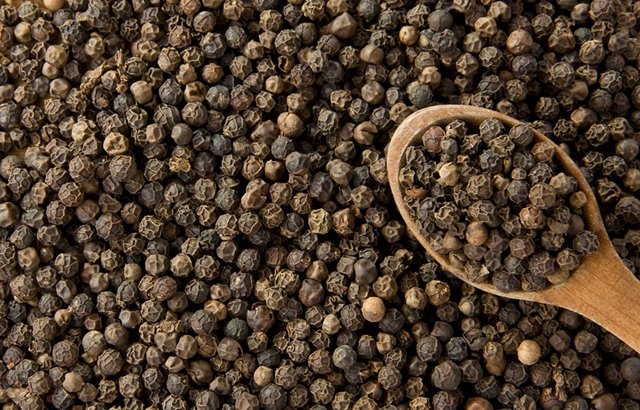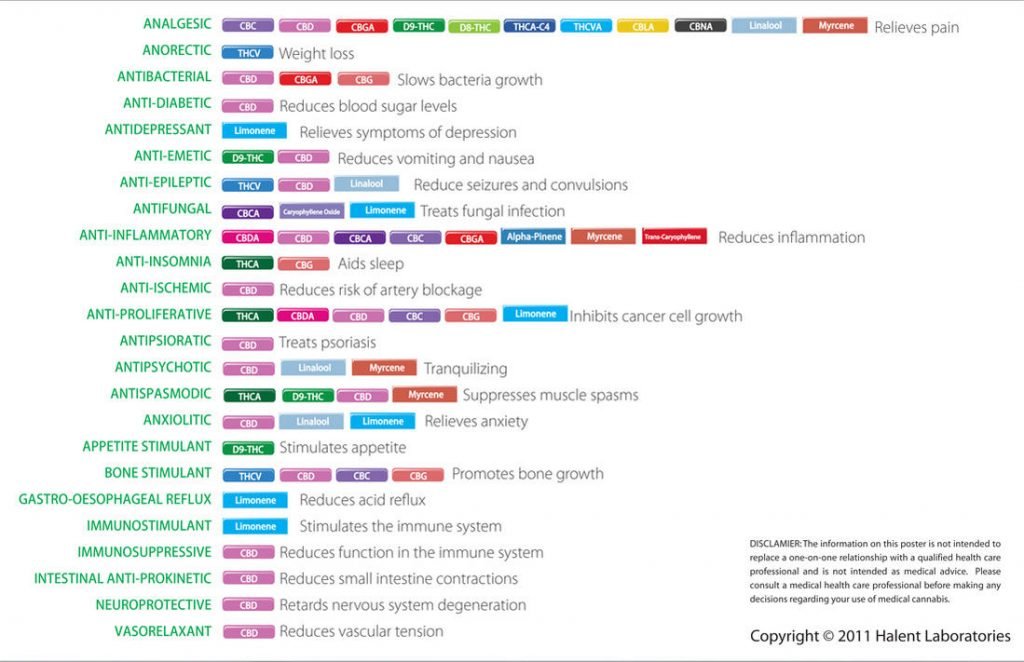Terpene Profile: Caryophyllene
Formula: C15H24
Molecular Mass: 204.35106 g/mol
Boiling Point: 160 °C (320 °F)
Vapor Pressure: 0.01 mmHg ( 25 °C)
LD50 (Lethal Dose): >5g/kg for rats (Compare to Nicotine: for mice – 3mg/kg, for humans – 40–60 mg/kg)
Caryophyllene is the primary terpene that contributes to the spiciness of black pepper and also a major terpene in cloves, hops, rosemary, and cannabis. It comes in two main forms, beta caryophyllene, also commonly seen as β-Caryophyllene or abbreviated to BCP, and trans-caryophyllene or TC. While this article primarilly looks at BCP, a couple studies do concern TC, and I will use caryophyllene generically throughout.
Caryophyllene is a sesquiterpene, made of three isoprene units, which makes it larger than monoterpenes like pinene, limonene and myrcene, which are made up of only two isoprene units. What makes caryophyllene chemically unique is its inclusion of a cyclobutane ring, which is a rarity in nature and makes it an attractive candidate for biotech research. Some cyclobutanes have already found medical uses, such as the chemotherapy drug Carboplatin. As BCP has also been shown to have cancer fighting properties it could be viable candidate for a new chemotherapy drug.
Caryophyllene isn’t only unique for being a cyclobutane, it is unique for being both a terpene and a “dietary cannabinoid,” a food-stuff which acts as a cannabinoid and binds to CB2 receptors. As stated in my first terpene profile, cannabinoids are a terpenophenolic compound, sub-set of terpenes. Since cannabinoids and terpenes are related it is no surprise that terpenes would trigger the body’s endo-cannabinoid receptors. The same 2008 study, which first identified caryophyllene as a cannabinoid, also found it had numerous medicinal benefits, including anti-oxidant, anti-inflammatory, anti-cancerous and local anesthetic effects. Some sources speculate that BCP is so powerful it could threaten existing pharmaceuticals, and synthetic cannabinoids currently being developed, which could be why BCP is so heavily studied.
 Therapeutic Uses
Therapeutic Uses
- Analgesic – Relieves pain.
- Antibacterial – Slows bacterial growth.
- Antidepressant – Relieves symptoms of depression.
- Anti-inflammatory – Reduces inflammation systemically.
- Anti-Proliferative – Inhibits cancer cell growth.
- Antioxidant – Prevents oxidation damage to other molecules in the body.
- Anxiolitic – Helps relieve anxiety.
- Neuroprotective – Slows damage to the nervous system and brain.
Credit: Mitchell Colbert at Leaf Online.


